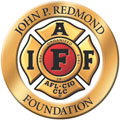Site Map
To view the Redmond PDF Abstract of the symposium or the PDF and Powerpoint vesrions of the presentation, click on the appropriate icon below:
|
|
- John P. Redmond Foundation, Seventeenth Symposium Abstract† (pdf) | |||
|
|
- Firefighter Geo-Location Devices (pdf) | |||
|
|
- Powerpoint Presentation (ppt) | |||
The following is an excerpt from pages 35 and 36 of the Symposium Abstract:†
|
Current Fire Fighter Operational Issues Fire Fighter Geo-Location Devices |
|
|
Wayne C. Haase President Summit Safety, Inc. 94 Jackson Road, #303 Devens, MA 01432 (978) 772-9009 whaase@summitsafetyinc.com |
 ‡ ‡ |
|
Background: Dr. Wayne Haase earned both his undergraduate and Masters degree in engineering at the Massachusetts Institute of Technology. He completed his doctoral work in engineering at Stanford University. Dr. Haase has been awarded 13 US Patents for his inventions and is the author of over 30 technical articles on ultrasonics, aerospace systems, biomedical systems, test and measurement equipment. Abstract: Firefighting is a dangerous and difficult job performed in a hostile environment. During a fire the atmosphere inside a burning structure can rapidly fill with dense smoke that can reduce visibility to only a few inches and render hand lights useless. Search techniques for locating disabled fire fighters and/or civilians have not changed much since Ben Franklin headed the Philadelphia Fire Brigade. This talk discusses the possible technologies and describes a new system, the Personnel Ultrasonic Locating Safety Equipment, or Pulse, which is capable of significantly reducing search times for locating fire fighters and exits by identifying the actual path to the target. The patented Pulse system is able to operate within the hostile environment of a burning structure without being adversely affected by the smoke, heat, or the structure itself. There are a number of reasons why the technology chosen for the Pulse system is ultrasound. First, ultrasound, particularly in the 20 kHz - 100 kHz range, is not significantly affected by the fire environment. Second, the wavelength of ultrasound is sufficiently short to allow the beam pattern of a hand-held device to be quite directional; the wavelength is sufficiently long to prevent Rayleigh scattering. Thus the smoke does not affect the beam. Third, since most surfaces reflect ultrasound, a Beacon can easily be located even if behind obstacles such as a desk or sofa. Because ultrasound reflects off walls, a Beacon can be located even if around the corner of a wall. However, since ultrasound does not penetrate walls, a searcher will not be led down a blind alley. In effect, ultrasound can provide information on the best path to the Beacon; that is, the strongest signal will indicate the shortest distance or path to the Beacon. Because ultrasound is able to pass through small openings, a Beacon can be located behind a closed door, as long as there is a small gap between the door and the floor or wall. Thus ultrasound is ideally suited to the task of finding and rescuing a disabled fire fighter. The Pulse System developed by Summit Safety, Inc., consists of two main components, a Beacon and a Tracker. The Beacon, shown in Figure 6-1, is similar to a PASS device and is worn by a fire fighter. If the fire fighter becomes disabled, the Beacon will go into alarm mode and transmit an omnidirectional ultrasonic homing signal. The Tracker is a hand-held directional receiver which is carried by the rescuer and detects the Beaconís homing signal. The Tracker indicates the strength of the received signal visually on a bar graph and audibly by a beeper. By scanning an area with the Tracker, much like using a flashlight, and by then moving in the direction of the strongest signal, the rescuer can rapidly find the disabled fire fighter. Several technology choices are available for the design of a tracking, safety, and navigation system for fire fighters, including optical, radio, and acoustic. Each has its advantages and disadvantages when used in the fire environment. A new system - based on ultrasound - has been shown to complement existing products and promises to significantly reduce the search time required to locate disabled fire fighters and exits and thus greatly enhances fire fighter safety.‡ |
|
 |
Close Window | | |  |
Back To Top |
Updated 05/10/05
† PDF Abstract obtained from Public Safety Health Systems, Inc.
(http://www.publicsafetyhealth.com/Education/Redmond%20Docs_2003/
2003%20Redmond%20Abstract.pdf)
‡ © Excerpt and Redmond image copyright IAFF, 2003. All Rights Reserved.
© Firefighter image copyright Survivair, 2004. All Rights Reserved.
© Copyright Summit Safety, Inc. 2005. All Rights Reserved.
94 Jackson Road #303 | Devens, MA 01432 | Phone: (866) 641-1500 | Fax: (866) 641-1501